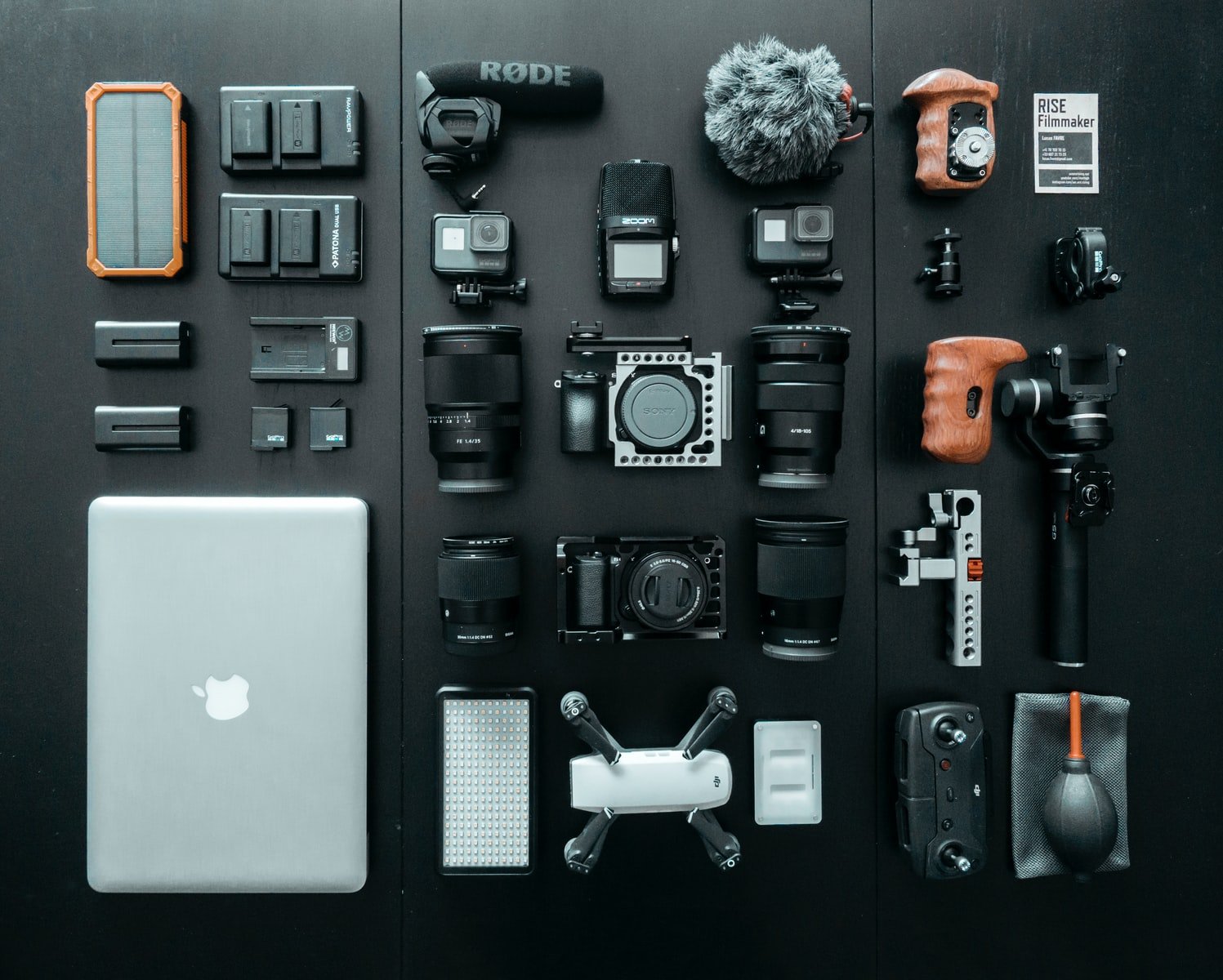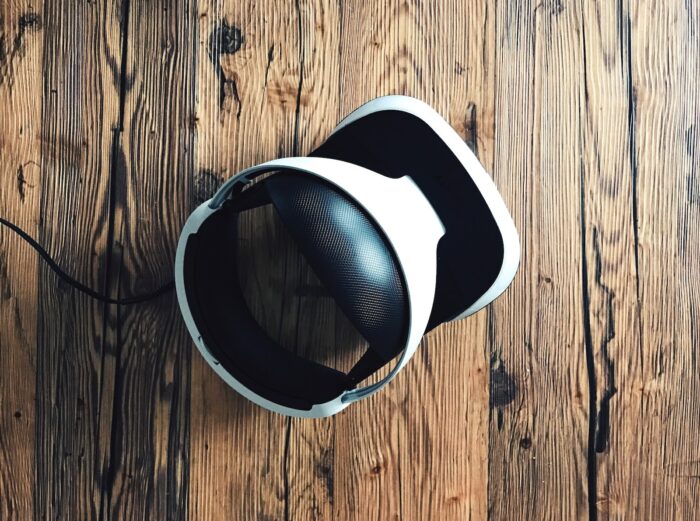Coined by Neal Stephenson in 1992, the concept of the Metaverse is more real than ever before. Users can now step into virtual worlds using various Metaverse devices to explore vast landscapes, interact with other avatars, shop, work, and play different games! The Metaverse equipment you choose determines the type of experience you’ll have within the virtual world. For example, if you use an AR headset such as HoloLens, you will be able to ‘overlay’ the virtual world onto your real one. This offers a ‘Mixed Reality’ experience to users.
Whereas if customers utilize Metaverse devices such as VR headsets, they can have a much more immersive experience in the virtual world. Since the Metaverse is still in its infancy, there is a lot of research being done into creating and improving Metaverse gear to enhance the overall customer experience.
Imagine attending concerts, parties, and more in virtual reality with your friends, simply by strapping on your VR headset and entering the digital world. Or, if you’re looking for a more immersive shopping experience, you can utilize AR to try different clothes out on your avatar before you make a purchase. Many brands such as Gucci and Zara are opening up virtual stores where users can shop for real-life clothing and can also purchase unique clothing designs for their avatars.
What Equipment Do You Need For The Metaverse?
While you do not necessarily need a VR/AR headset to step into the Metaverse at the moment, users will not be able to fully experience everything that the virtual world offers. Large tech giants such as Microsoft and Meta are continuously working to create metaverse hardware that users can use to step into the Metaverse.
Apple, Sony, and Samsung are also currently working on creating lighter and more affordable VR hardware equipment for the Metaverse. However, users can also join metaverses by simply using their smartphones or computers.
Since the world of VR is also rapidly evolving, mass accessibility through devices such as smartphones can help users experience the Metaverse and participate in its virtual economy.
Meta acquired Occulus back in 2014 and has been working on creating a fully immersive VR headset since then. While the MetaQuest2 is an excellent VR device, Meta is still looking into making the design affordable and lightweight.
What Are Metaverse Devices?
The Metaverse offers users an opportunity to explore vast landscapes and interact with various individuals online. Users can utilize Metaverse devices such as VR/AR headsets to step into the virtual realm to have fully immersive experiences. Smartphones and computers can also be utilized to enter the metaverse, but as mentioned in the section above, they offer far less immersive experiences.
Companies such as HaptX have also developed ‘VR gloves’ that offer haptic feedback when you interact with objects in the Metaverse. The gloves offer full body mobility and add a new layer of realism to the VR Metaverse experience.
There are also companies working on creating haptic body suits, which would allow users to feel everything within the Metaverse. Because these concepts are still extremely new, these Metaverse devices are extremely expensive.
More innovative devices such as Meta’s wristbands are extremely comfortable to wear and open up a new realm of satisfying intuitive interactions for users. Tech companies are also working on other exciting products, such as AR contact lenses that would allow users to experience AR in real life without using their smartphones or wearing an AR headset.
Top 8 Metaverse Hardware Devices
Here are some of the most popular Metaverses devices that enhance the user Metaverse experience:
1. Sony PlayStation (VR Hardware)
The PlayStation is an iconic console, facilitating access to thousands of interactive games worldwide. With their recent launch of the PlayStation 5, they’ve decided to venture into the VR space to allow for a fully immersive gaming experience. Connected by a cord with the PS5, Sony VR Hardware utilizes integrated cameras to track locations throughout the game.
With features such as eye tracking and 3D audio, the gameplay experience is amazing. Driving around GTA 5 with VR is an incredible experience since you step into a completely new world that offers life-like graphics and an interactive storyline.
Although the specs of the Sony PlayStation VR2 have been released, the launch date is yet to be confirmed. Sony PlayStation users still have the regular VR to try out while waiting for the VR2. With games such as Marvel’s Iron Man VR, users can fly around and can embody their favorite heroes in 3D.
2. Microsoft HoloLens (AR Headset)
The HoloLens is a very popular AR headset that enables users to ‘overlay’ the virtual world onto the real one. Microsoft has been focusing on the world of ‘Mixed Reality’ for quite a while, and the HoloLens device incorporates numerous light and optical sensors, including a “Holographic Processing Unit.”
The HoloLens was built to provide solutions to real-life industrial problems and to boost productivity. With big-name brands such as Heinz and Kawaski already on board with the “Mixed Reality” workplace, the HoloLens is poised to revolutionize the healthcare, construction, education, and manufacturing industries!
The headset utilizes cameras to detect the user’s surroundings and injects Metaverse objects within the real-life setting. Through this, Microsoft also aims to solve supply chain problems; for example, a repairman could guide factory workers to conduct simple repairs without having to visit the factory himself. The HoloLens hardware, however, comes with a hefty price tag of $3500, whereas the industrial edition could cost at least $4500. Since the research in the AR space is still in its early stages, Microsoft is working on bringing the price down and adding features such as haptic feedback and detecting movements.
3. Valve Index (Metaverse Gear Kit)
Although this VR headset doesn’t offer anything significantly unique as compared to its competitors, the Valve Index VR kit is priced at $999. However, the kit contains more than just the headset; it also comes with incredible controllers that offer the option to track finger movements.
For games such as Half-Life, this can be a really cool feature. The VR kit also integrates with Steam, thus giving it access to a large library of VR games. For PC players, this is an incredible choice due to its compatibility with Steam. If you are already using some other Steam-Compatible VR headset, you can purchase the controllers only for $280 to add a new layer of interactivity to your VR games.
The Valve Index was released in 2019, as an alternative option to the Meta Quest. Instead of going into a wireless framework, similar to the Meta Quest, the Valve Index decided to cater to PC gaming enthusiasts with a wired framework to maximize performance.
The display is wired and head-mounted and utilizes external ‘Base Stations’ to track movements. These can be placed throughout a room to track movements precisely. With its focus on ease of use, the Valve Index is definitely one of the best Metaverse devices in use.
4. MetaQuest2 (Headset Equipment)
Oculus was acquired by Meta in 2014 and has been one of the first VR headsets that started through a campaign on Kickstarter. Meta’s acquisition of Oculus was a strategic move to cement its place in the exciting world of VR.
Now, with Meta’s redefined company vision, the Oculus and the Metaverse are at the forefront of what they intend to work on.
The first version of the “Oculus Rift” headset was released in 2016 for $600. The latest headset, MetaQuest 2, allows users to experience 3D Audio with wireless connectivity. The headset uses cameras instead of external sensors and is priced at an affordable $500. The Quest2 has various benefits over the Rift, such as a better resolution of 3664 x 1920px with a higher refresh rate of 120Hz.
As compared to other headsets within this space, this VR headset offers an affordable entry point into the world of VR. With exciting games such as Beat Saber, Population One, The Walking Dead, and more, the Meta Quest 2 is definitely an excellent choice for VR enthusiasts.
5. Haptx Gloves (Metaverse Accessories)
These gloves are the perfect metaverse accessories for individuals looking to fully immerse themselves within the virtual world. These gloves work with ‘true-contact haptics’ that provide sensory feedback to your hands in a similar way to how we feel things in the real world.
With impressive features such as up to 40 pounds of resistive force per glove, these haptic gloves provide an unmatched sensory experience compared to other gloves. It utilizes magnetic motion tracking to track up to 30 (Degree of Freedom) per glove with a precision of up to sub millimeters with no lag.
Since these gloves provide ease of use, users can move freely in the digital realm with their avatars following their real-life movements. There is also a collaborative use case where you can utilize these gloves with a headset, for example, HoloLens to apply this to industrial applications.
The gloves allow controlling robotic hands from across the world. Imagine an experienced surgeon operating from the US to a third-world country by controlling robotic hands. There is still plenty of work being done on these Metaverse devices, as they offer numerous opportunities for usage.
6. Magic Leap (Metaverse Devices)
This AR Metaverse device was established in the year 2010 and has been a key player in the AR industry ever since. The headset works with a controller that offers 6 degrees of freedom with sensory haptic feedback. The feedback is a major benefit as it helps users interact with their surroundings. This has immense potential; for example, Magic Leap technology has assisted doctors at the UC Davis Children’s Hospital in collaborating and viewing 3D CT scans and MRIs. This could prove to be very useful in the healthcare industry.
It could also be helpful in the educational sector where students could immerse themselves in AR and learn concepts in very interactive settings. The Metaverse device also offers voice inputs, eye-tracking, hand-tracking, and more for a more enhanced AR Experience. It is also very lightweight, i.e. 316g, making it one of the lightest headsets on the market.
7. Mojo Vision (Metaverse Accessories)
Imagine not having to wear headsets at all to step into the Metaverse. Sounds incredible, right? Well, that is exactly what this California-based startup is offering. Mojo Vision is a metaverse accessory that offers users a chance to experience Augmented Reality simply by wearing scleral contact lenses!
This unique innovation utilizes a microLED alongside solid-state batteries and smart sensors to display relevant information. Scleral lenses are permeable and are easy to put on; they are commonly utilized to correct cornea and vision problems.
Thus this revolutionary metaverse device also offers the added feature of vision correction alongside ‘overlaying’ the virtual world on our digital one. The company is currently powering the lenses with a wrist-worn device.
In future versions, the company plans to have the lenses recognize what they’re seeing so that they can display information next to it. Imagine talking to someone and seeing everything you remember about them right next to them.
8. HP Reverb G2 (Headset Device)
Priced at $399, this VR headset is also part of the Windows Mixed Reality series. Windows has been focusing on blurring the lines between the digital world and the real-life world for quite some time, and this headset offers users a chance to fully immerse themselves within a 4k resolution display; the headset is compatible with PCs but generally requires a PC with high specifications to run at full capacity. There is an option, though, to operate at half resolution, but it is recommended to run the G2 at full capacity to get the optimum user experience.
The headset is also extremely lightweight, thus providing an improved user experience. The headset offers 3D audio with 2160×2160 resolution per eye, which is one of the best resolutions on the market today.
The lenses can be adjusted for different eye distances and can be customized to fit each user perfectly. It also does not require any external sensors as the cameras built into the headset track movements perfectly. The controllers are also very comfortable to play with, which is what makes this one of the best Metaverse devices on the market today.
What to Consider When Selecting Your Metaverse Equipment
There are several things to take into consideration when choosing between different Metaverse devices. These include:
- Cost: Expensive headsets such as the Microsoft HoloLens may not be feasible for individuals on a budget. However, the HP Reverb G2 or MetaQuest2 might be better for an individual looking to play games and explore the Metaverse.
- Resolution and Audio: 4K VR headsets provide a completely different experience as compared to headsets with lower resolutions. 3D audio also plays a major role in making the entire experience more immersive.
- User Freedom: Some headsets in the list mentioned above offer wired connectivity which may restrict movement a little. External sensors also hamper movement, which is why it’s recommended to consider all factors before selecting Metaverse devices.
By choosing the right gear, users can fully immersive themselves into incredible virtual world experiences. For example, attending a virtual concert using a 4K VR Headset would enable users to have an immersive experience. Using avatars with VR headsets, individuals can explore vast virtual landscapes and design 3D objects with ease.
Users can also utilize AR headsets to transform their virtual shopping experiences by using AR to try on different items to see how they would look on their avatar to make digital and real-life purchases.
Do You Need Metaverse Gear at All?
In his Connect 2021 address, Mark Zuckerberg showcased what “the future of social media” could look like. An immersive 3D space that can be completely customized, allowing users to utilize avatars to interact with friends and family in different virtual settings.
A VR headset is necessary to get a full 360-degree Metaverse experience. There is a variety of Metaverses such as Minecraft and Roblox that you can enter through your PC without a headset, but to explore 3D worlds, users would need to obtain the necessary Metaverse devices.
Users will be able to utilize Metaverse accessories to design their own avatars, explore virtual worlds and also create 3D digital assets. These assets can be minted as NFTs and recorded on the Blockchain.
Users also have the option of buying plots and then building properties on them to host parties and events. Without Metaverse hardware, you will not be able to visualize how your property would look in 3D, and fully experience the exciting possibilities that the Metaverse offers.
Conclusion
There are several other companies working within this space, for example, Samsung VR, HTC Vive, and more. Apart from headsets, there is a large market for other metaverse accessories such as sensor-based systems, as these play a key role in making the entire experience more immersive.
With tech giants such as Meta and Microsoft working on developing new Metaverse equipment to further enhance user experiences, users can expect to see plenty of innovative devices in the near future.
















